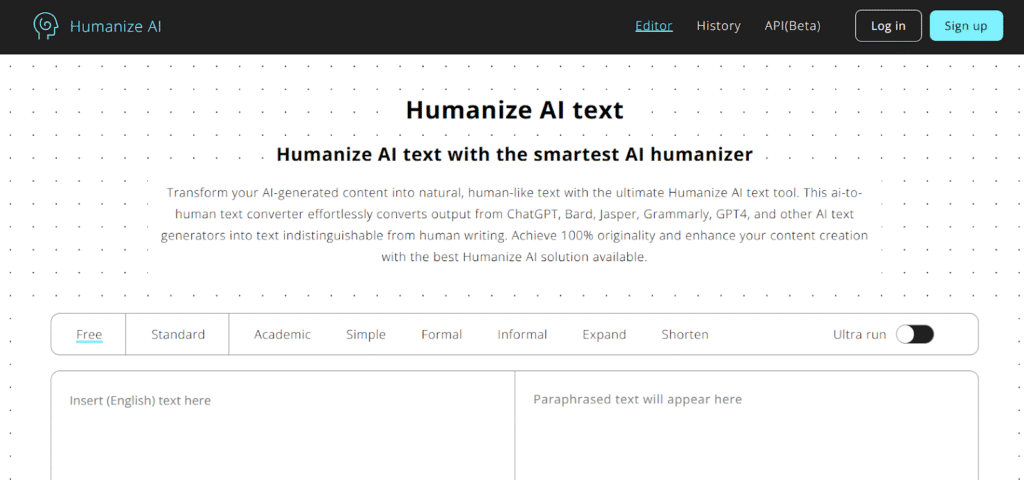Why Teachers Must Learn to Humanize AI in Education

Understanding the Concept of “Humanize AI”
To humanise AI means transforming AI-generated content into something that feels like it’s been written by a real person. Instead of sounding robotic, stiff, or too mechanical, humanised AI text carries emotional depth, context awareness, and a personal touch.
For teachers, this is crucial. When you’re crafting lesson plans, giving student feedback, or writing emails to parents using tools like ChatGPT or Jasper, you want the tone to be warm, clear, and engaging—not cold or overly formal. Humanizing AI helps bridge the gap between machine output and human empathy.
The Rise of AI in Educational Settings
Artificial intelligence is already making a strong mark in education. Teachers use it to:
- Draft emails
- Create quizzes
- Generate lesson ideas
- Provide instant grammar checks
- Translate documents
Tools like ChatGPT, Grammarly, and QuillBot have become popular among educators. However, the challenge is that while these tools are efficient, they often lack emotional intelligence. This is where humanising AI comes in—to add the much-needed heart to automated content.
Why Humanizing AI Matters for Teachers
When students read content that feels human, they relate better. Robotic-sounding material can alienate learners and weaken engagement. On the flip side, humanised content:
- Connects emotionally with students
- Helps in building trust
- Makes learning more enjoyable and effective
Moreover, using a tool like Humanize AI ensures that AI content passes as original and natural—perfect for classroom use.
Benefits of Humanizing AI in the Classroom
Humanising AI enhances:
- Critical Thinking: When content is less formulaic, students are more likely to reflect, question, and engage.
- Engagement: Human-like tone encourages curiosity and improves attention spans.
- Relatability: Students from various backgrounds can better relate to content that sounds like it’s written by someone who understands them.
- Originality: By removing detectable AI patterns, humanised content appears more authentic and unique.
How to Use Humanize AI Tools Effectively
Here’s how teachers can use the Humanize AI Text Tool:
- Go to the website: Open https://www.humanizeai.pro
- Paste your AI-generated text into the box
- Complete the Captcha to verify you’re human
- Click “Humanize AI”
- Review the output, which will be 100% human-like
- Edit as needed and integrate into your lessons, assignments, or emails
The best part? It’s free and works across all browsers and devices.
Humanising AI-Generated Lesson Plans
Let’s say you used ChatGPT to draft a science lesson on ecosystems. While the facts are correct, the tone might be too stiff. Run it through Humanize AI, and you’ll get:
- Friendlier introductions
- Relatable analogies
- Clearer examples
- A more conversational tone
This transformation makes lessons more engaging for students without compromising accuracy.
Common Pitfalls in AI Text and How to Fix The
AI-generated text can often be:
- Too formal: It lacks warmth
- Emotionless: It fails to connect with readers
- Repetitive: It uses the same phrases over and over
Using a humanising tool allows teachers to overcome these pitfalls effortlessly.
Best Humanize AI Features for Educators
Educators will especially benefit from features such as:
- Formal and Simple Text Modes: Adjust tone based on student age group
- Expand/Shorten Tools: Fit content into worksheets or slides
- Confidentiality: Keeps student or staff data private
- Multilingual Support: Great for diverse classrooms
Bypassing AI Detection While Staying Authentic
Educational institutions often use tools like Turnitin or GPTZero to detect AI content. Humanize AI ensures your materials pass these detectors while keeping the message intact.
This is especially helpful when using AI for report writing, study materials, or student feedback—areas where originality and human touch are vital.
How Humanised AI Text Supports Diverse Learners
When AI content is too mechanical, it’s harder for:
- ESL learners to understand
- Neurodiverse students to engage with
Humanising AI helps simplify language, add clarity, and incorporate inclusive examples.
Using Humanized AI for Student Feedback
Feedback should motivate—not confuse or discourage. Humanise AI makes it easier to:
- Write feedback that’s clear and kind
- Encourage a growth mindset
- Avoid sounding too generic
Ethical Considerations in Using AI in Education
AI isn’t perfect. Educators must:
- Ensure privacy of student data
- Avoid biases embedded in AI tools
- Be transparent with students about using AI
Using humanised AI responsibly ensures integrity in the teaching process.
Encouraging Students to Humanise AI in Their Work
Teachers can assign tasks where students:
- Rewrite AI-generated paragraphs to sound more natural
- Identify emotional tone in AI content
- Explore the limitations of AI-generated writing
This builds their media literacy and critical thinking skills.
Using Humanised AI in Parent-Teacher Communication
Emails written by AI can sound distant or cold. Humanise AI helps educators:
- Personalize messages
- Maintain a warm and professional tone
- Build trust with parents and guardians
Balancing AI with Human Touch in Teaching
AI is a tool, not a replacement. Great teaching still relies on human connection. Teachers should:
- Use AI for structure
- Humanise content before delivering it
- Stay present and empathetic in all interactions
For more update visit this page: scrollwell.com/plus
FAQs About Using Humanise AI in the Classroom
Q1: Is Humanize AI safe for classroom use?
Yes. It ensures content privacy and offers secure, plagiarism-free outputs.
Q2: Can I use it to humanise multiple types of content?
Absolutely—lesson plans, feedback, newsletters, and more.
Q3: Does it work on mobile devices?
Yes, it’s fully mobile- and tablet-friendly.
Q4: Do I need to register to use it?
No. It’s completely free and doesn’t require any sign-up.
Q5: Will the tool keep my educational tone?
Yes. You can select formal or simple modes based on your audience.
Q6: Is it legal and ethical to humanise AI text?
Yes, as long as you use it to improve communication and maintain transparency.
Join the Scrollwell WhatsApp Community
Get timely updates on faculty jobs, FDPs, research opportunities, and professional development resources. Connect with a growing network of educators across India.
Join WhatsApp


